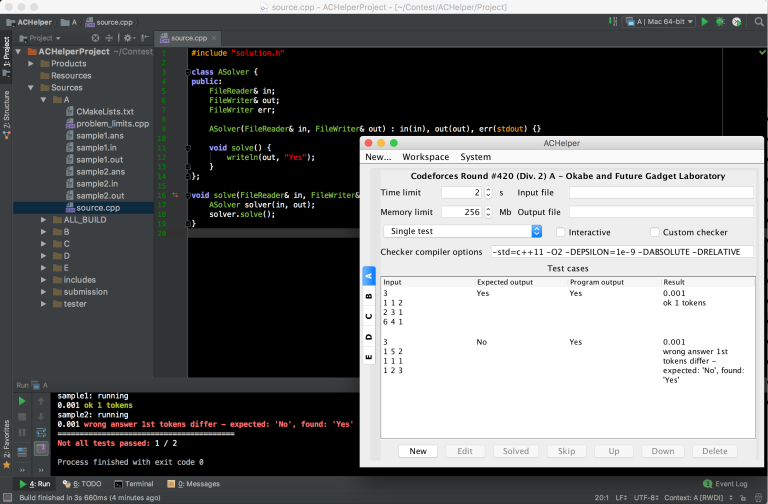Let me introduce the competitive programming tool that's aimed to help you get AC more easily: ACHelper, wiki
I tried to take the best elements from Hightail, CHelper and Caide, and add project generation using CMake on top of that.
The tool itself is cross-platform and should work with any programming language and IDE that is supported by CMake (or other project generator). However, templates only for C++ for Mac (that should work for Linux as well) are implemented at the moment. Any help on Windows support is highly appreciated, more details on that here.
A screenshot of ACHelper with my AppCode IDE after the testing. 
Let me know what you think.










